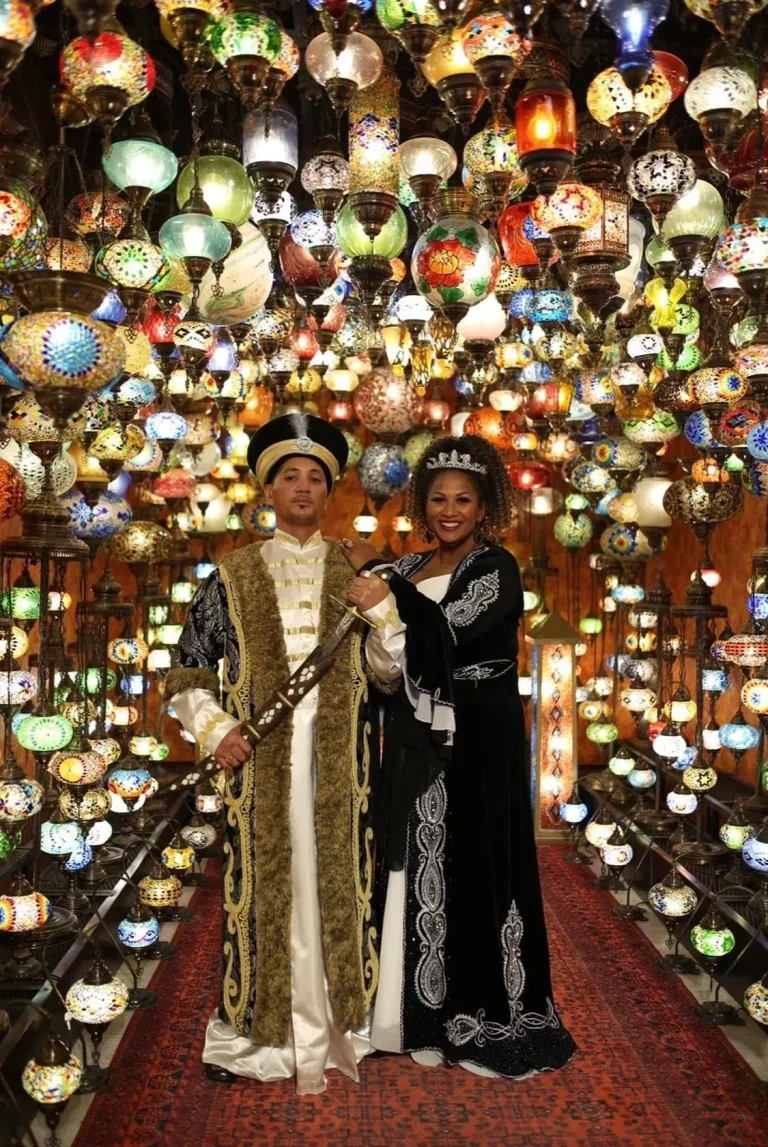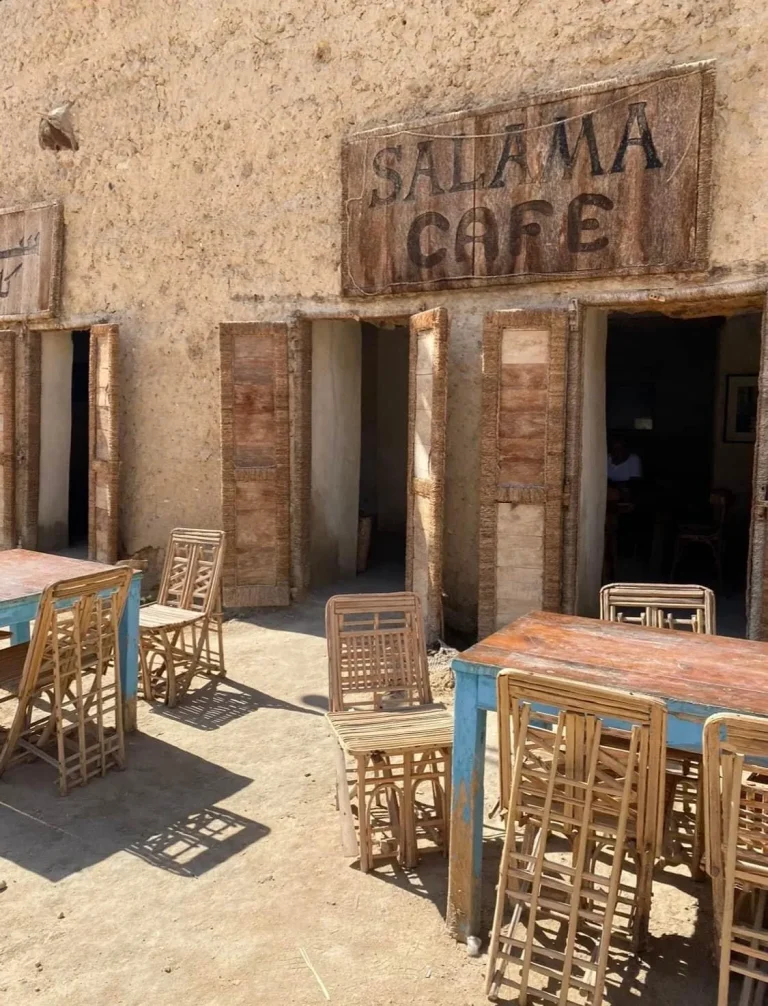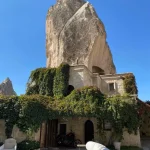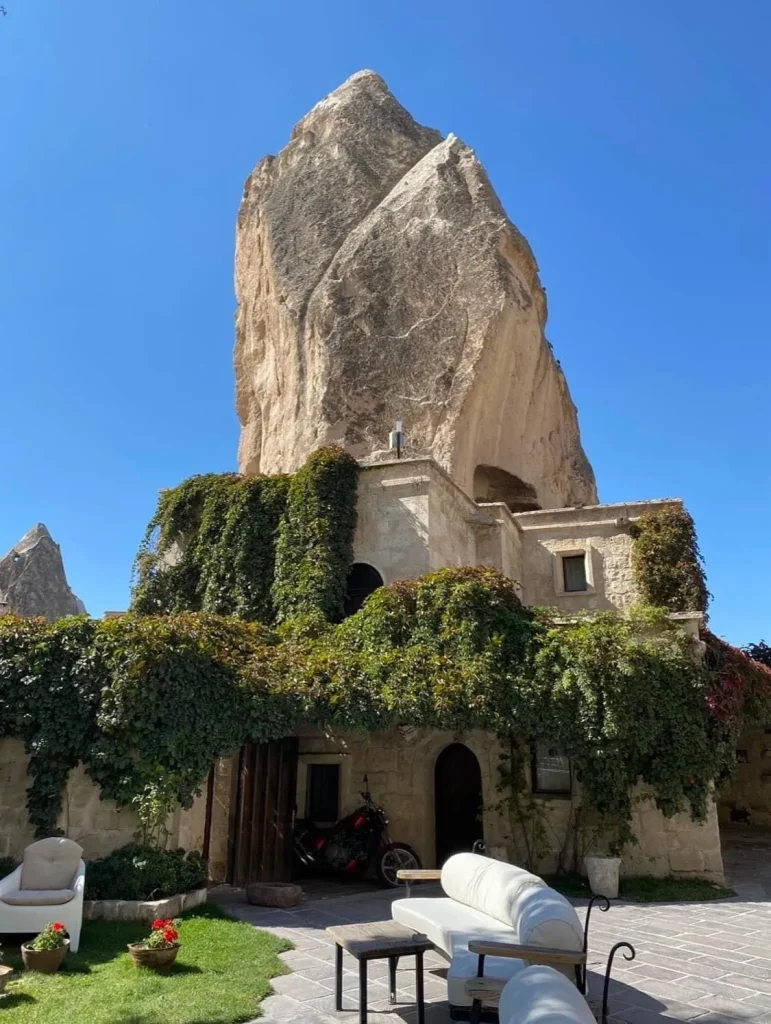
One of the most fascinating destinations of our trips was Cappadocia. Known as the heartland of Turkey, Cappadocia not only covers a significant amount of land, but has an incredibly rich history and a very wide variety of activities to do today. They are most famous for the sight of hundreds of hot air balloons soaring over Cappadocia’s horizon at sunrise. It is a breathtaking sight and is even more thrilling to experience, so we can see how this image has become synonymous with Turkey’s modern tourism. But there is so much more to this area than these hot air balloons. Cappadocia has what seems like endless caves, rocky valleys, and volcanoes to explore, and we wasn’t sure how we was going to fit everything into our time in this beautifully unique area.
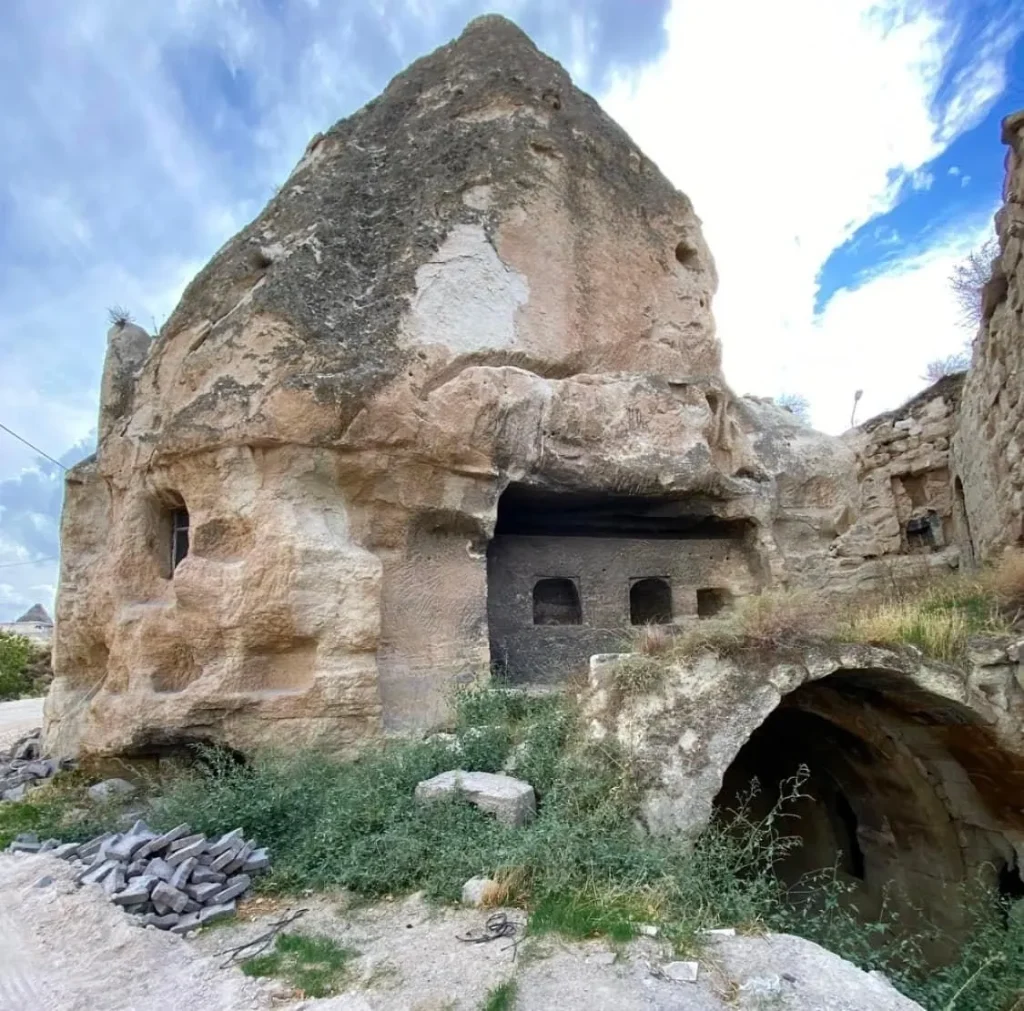
Before we go into our adventures, let us dive into the history of the area. When we say Cappadocia is historically rich, we mean it: first of all, the first human settlement in the area was approximately 9,000 years ago. There are also countless remnants of Bronze Age settlements from 3,000-1,000 BC and most of the cities that still remain in Cappadocia today originated back to Ottoman, and sometimes Roman, times. One of the most fascinating things about Cappadocia’s history, is that while Alexander the Great was conquering the surrounding area, Cappadocia remained independent. This soon became a pattern as Cappadocia’s alliances flipped back and forth between the Rome, Greece, and their respective enemies until over 600 years later when it became the largest province of the Roman Empire in the 4th century. Cappadocia remained combination of Christian and secular until the 12th century when they came under the rule of the Ottoman Empire when Islam also became a prevalent religion of the area. Today, you can see influences of many of the religions of the region as you walk through the rocky formations, ancient structures, and, of course, the cave churches.
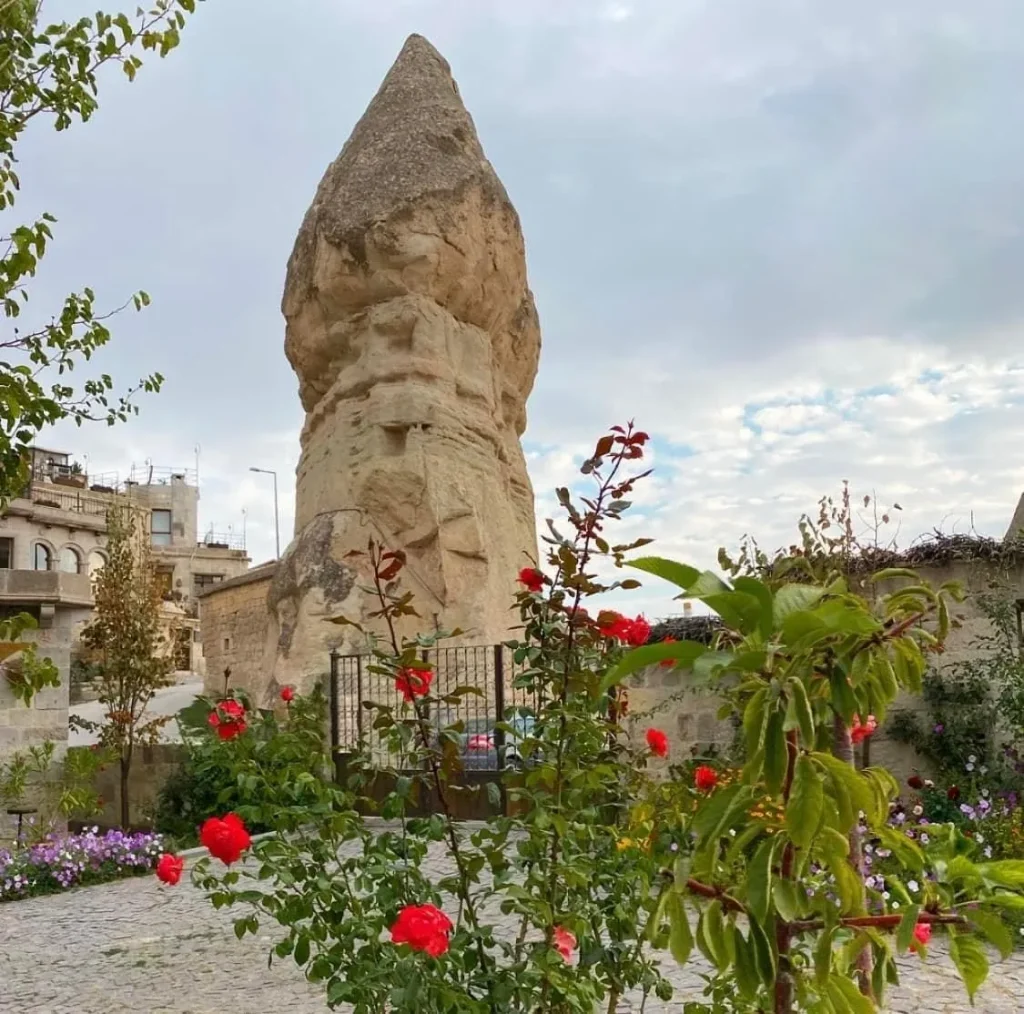
The cave churches specifically were such a unique experience. Dating back to the 9th and 10th centuries, these churches were carved into the chimneys and mountains that naturally form in the area by Byzantine Christians. There are hundreds of them scattered throughout all of Cappadocia, most of which are filled with beautiful fresco paintings. Most of the cave churches actually originated as monk’s cells. With the widespread of Christianity, we saw a wider variety of monasteries or monastic cells form around the world, and the way monks chose to live in Cappadocia was to carve their own home into the incredible mountains and rock formations. Occasionally, the monk’s cells would be connected to a church which would also be dug out in a similar fashion. You simply cannot understand how massive and impressive these rooms are unless you’re physically there.
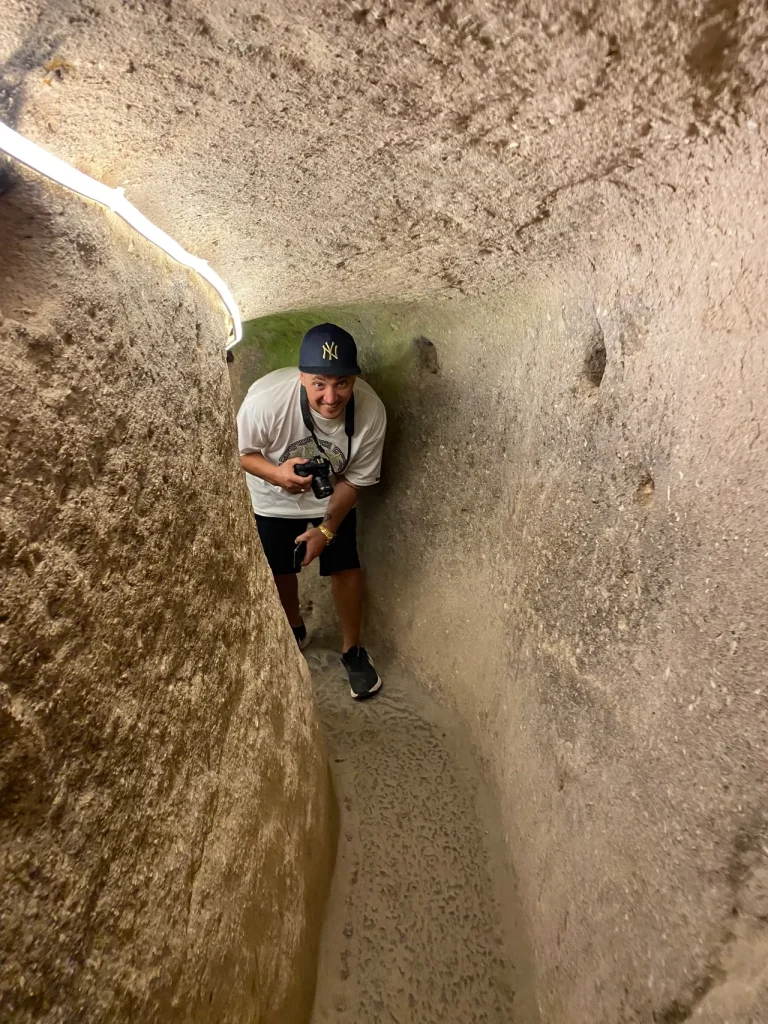

Walking through these rooms and churches, it was hard to remember that we were underground, in a room carved out over a thousand years ago.
Something we discovered as we explored the many valleys of Cappadocia, is that the carved rooms in the cliffs were not all created for religious purposes, but for practical ones. These rooms that line the cliff’s façade throughout Cappadocia are so unique and eye capturing that it’s hard not to wonder why someone would go to so much trouble to live this way. We soon discovered that it was actually the smartest way to protect livestock, store food, and for basic living. The caves housed everything from pigeons and bees to horses, but also were created for winepresses, kitchens, and food storage. It’s no wonder monks decided to live the same way once they saw the locals thriving in the cliff-side caves since the early 900s AD.
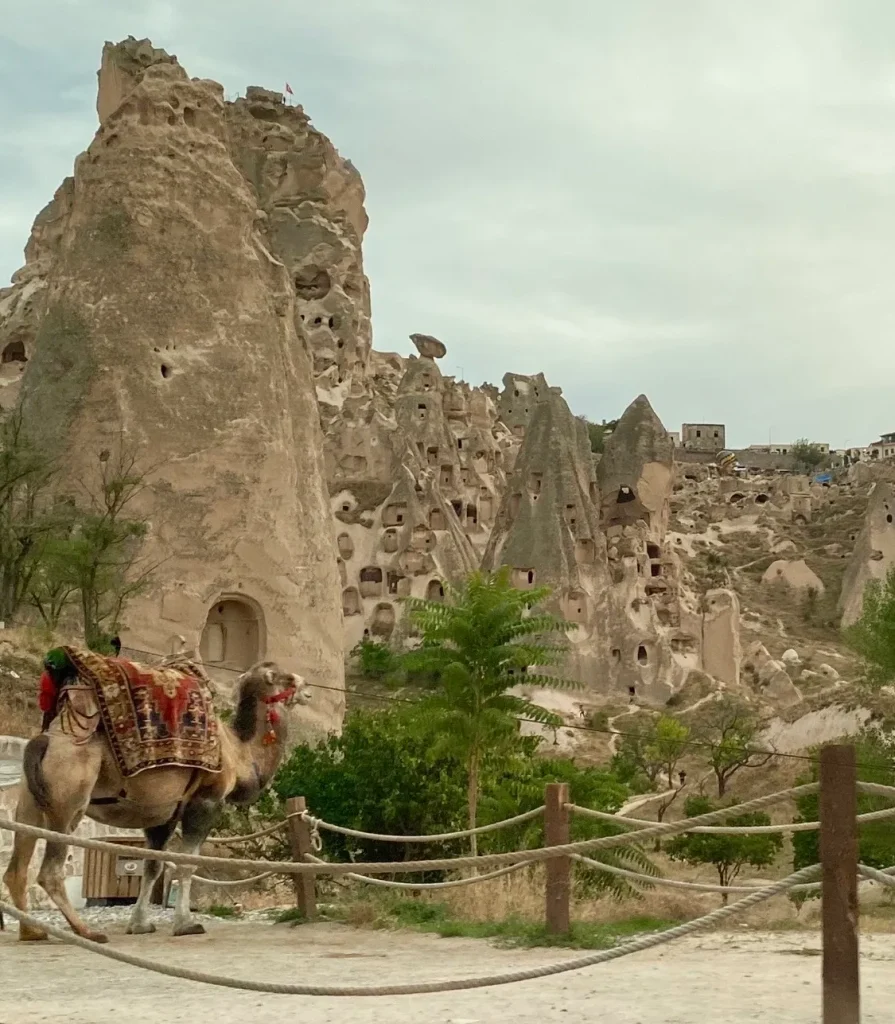
As we made our way through the rest of Cappadocia, we saw a beautiful blend of strategic and thriving tourism and natural valleys and mountains to explore. While hot air ballooning has only been present in the area since the 1980’s, it has done a remarkable job at bringing new people to this beautiful area. The hot air balloons were actually introduced to Cappadocia as a way to increase tourism in the area, and it has definitely succeeded in doing that. What quickly followed were things like the Goreme Open Air Museum, which was a guided tour that teaches visitors about the history and culture of the area while walking through some of the best kept 10th century cave churches and monasteries in Cappadocia.
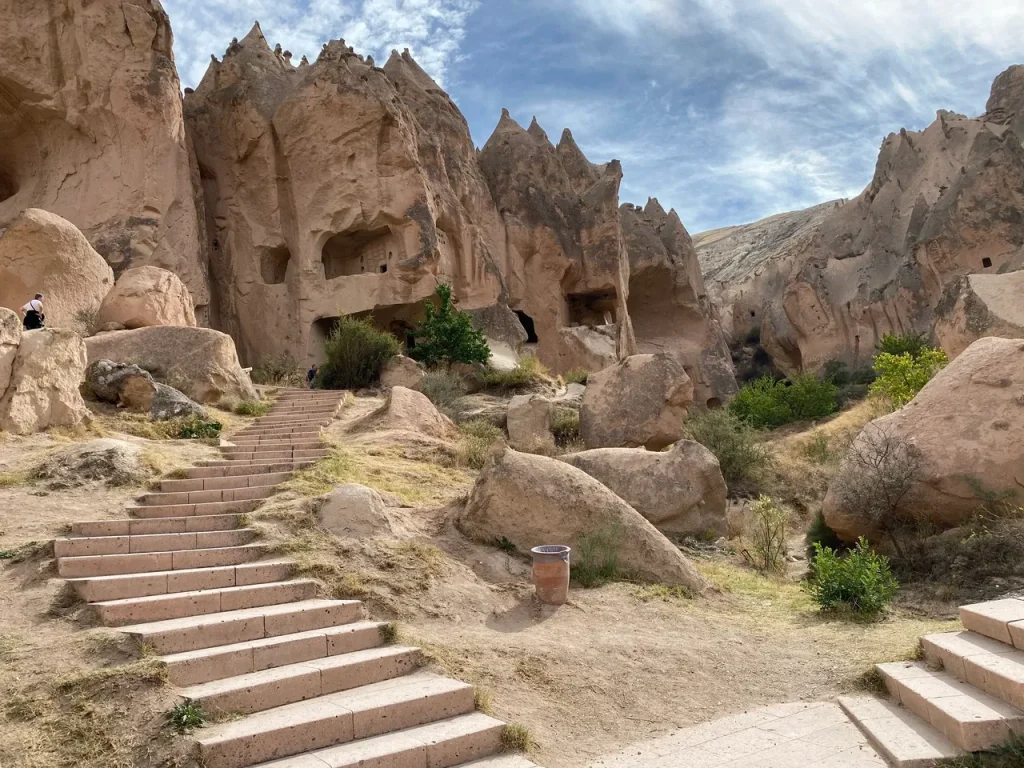
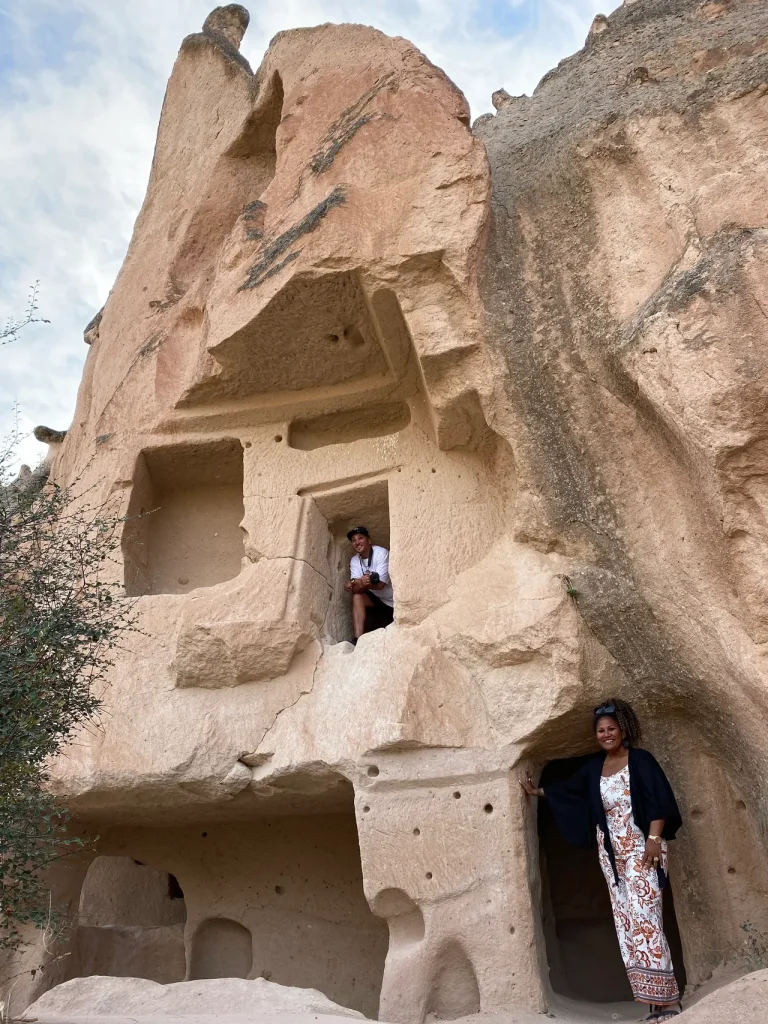
Other tours can take you through the deep valleys, up one of the two volcanoes in Cappadocia, or along the endless hikes that take you to rivers and waterfalls. Cappadocia was truly an amazing place to visit it was worth every early morning wake up to see the balloons take off and the sunsets over hills and the beautiful township was just as equally spectacular. We honestly felt like we definitely could go back and just enjoy this place over and over again.

